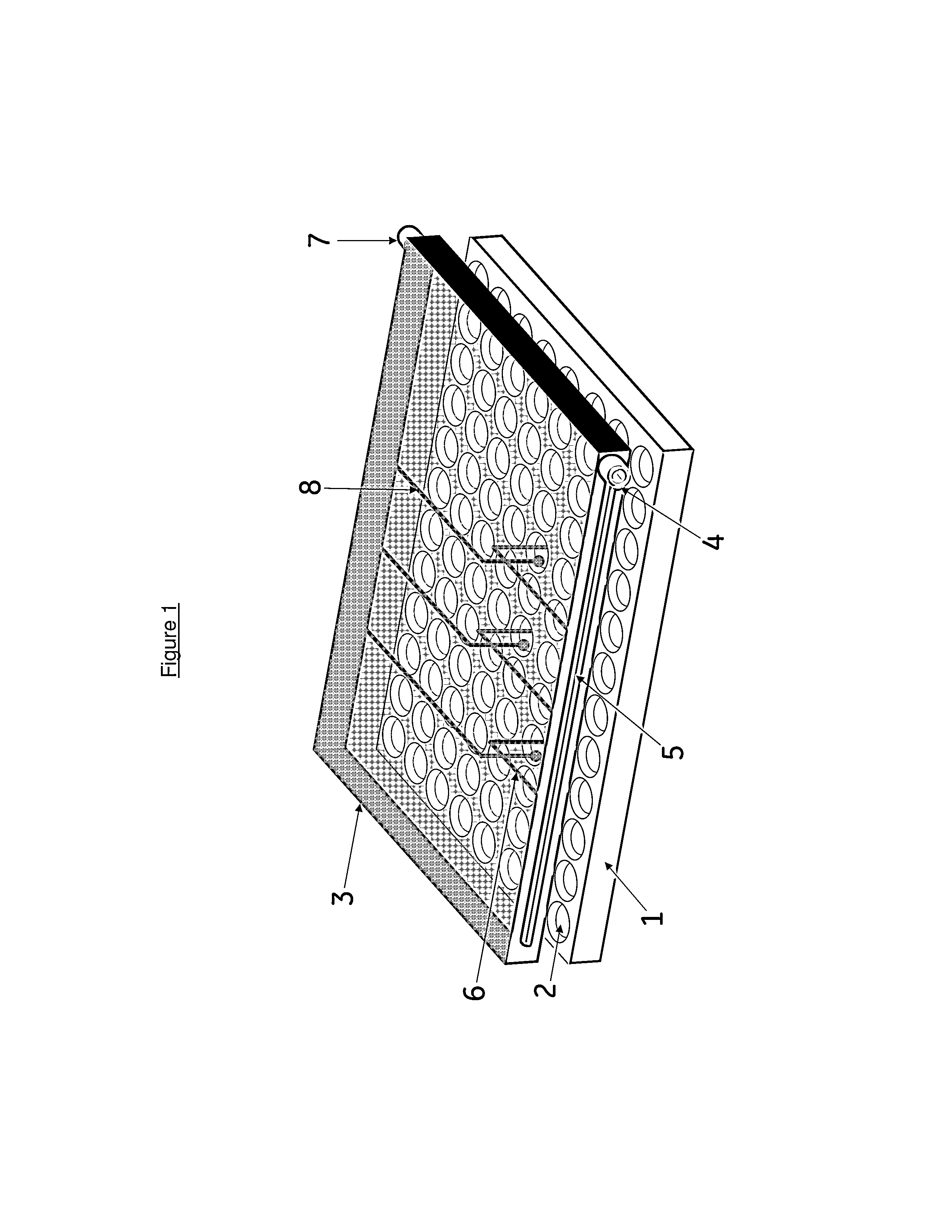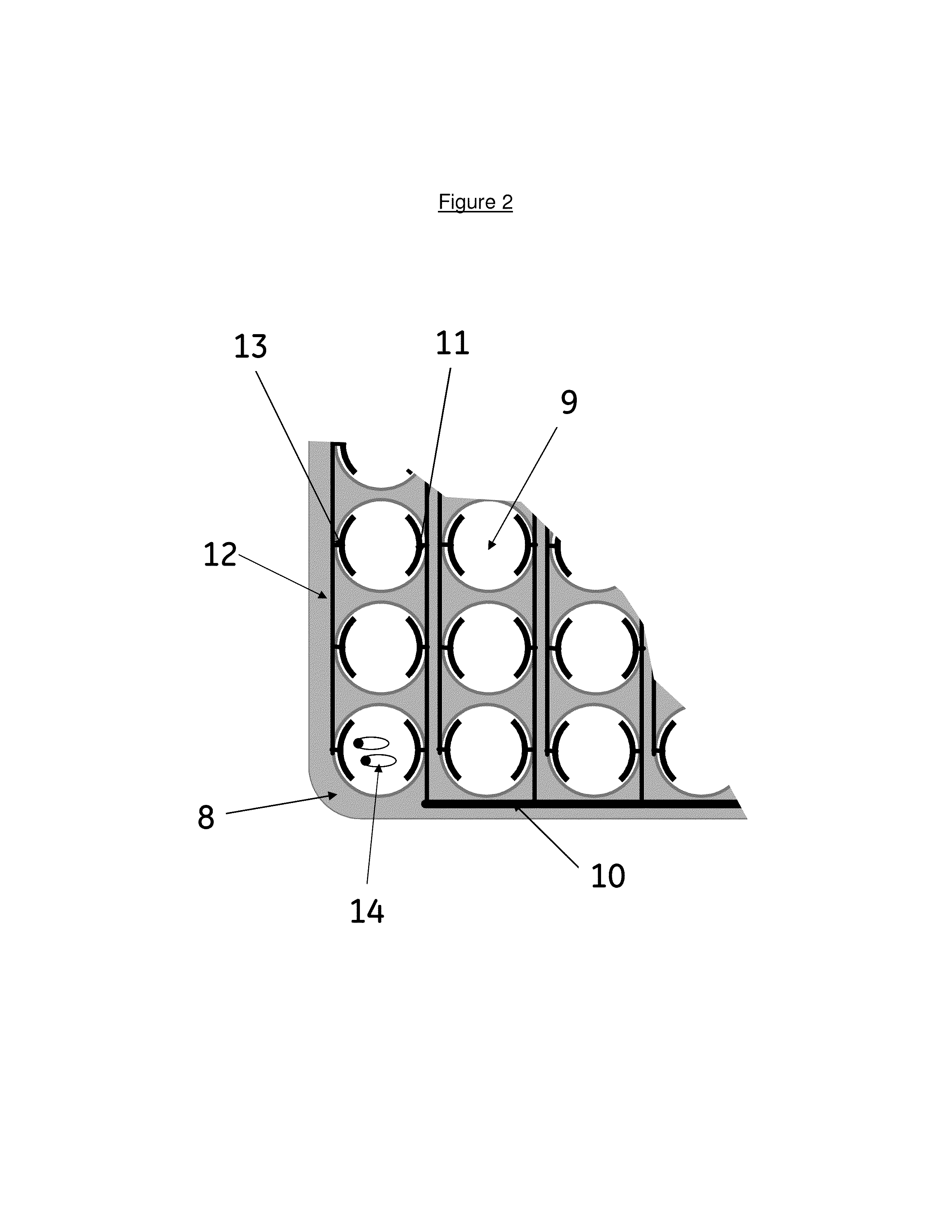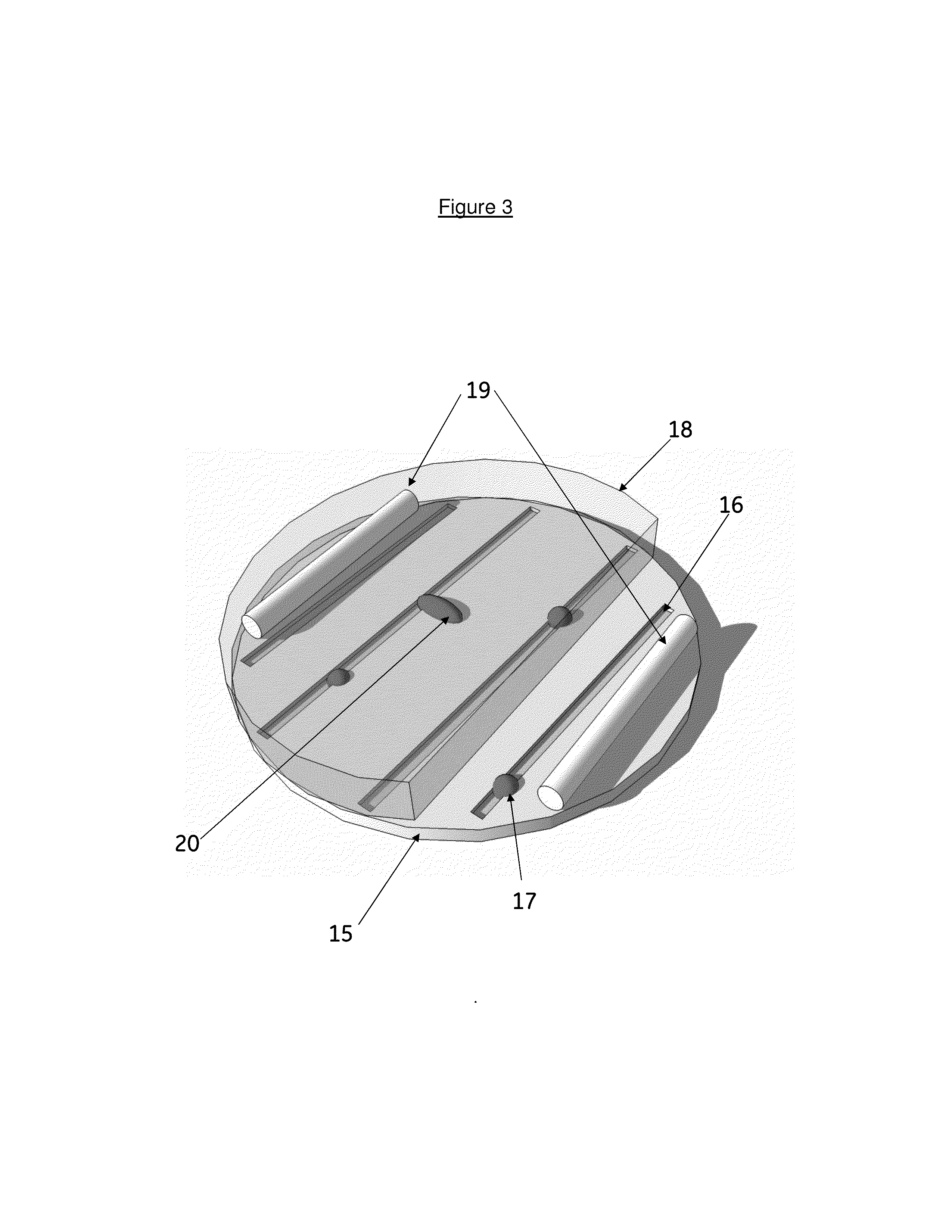Apparatus and method for detecting DNA damage
a technology of dna damage and apparatus, applied in the field of apparatus and insitu method for detecting dna damage, can solve the problems of limiting the potential throughput of the assay, damage to the integrity of the dna of the cell, and high cost of the assay
- Summary
- Abstract
- Description
- Claims
- Application Information
AI Technical Summary
Benefits of technology
Problems solved by technology
Method used
Image
Examples
Embodiment Construction
[0044]FIG. 1 shows a diagram of a 96-well plate [1] suitable for electrophoretic separation and microscopy imaging of DNA fragments (e.g. Packard View Plate, Packard). The plate [1] comprises an array of wells having optically transparent bases [2] which can be used to provide an array of separate vessels in which to carry out Comet assays. Cells are added to the wells [2] and where required, incubated with a test agent for an appropriate time period to allow potential DNA damage activity of the test agent to occur. Cells are overlaid with a suitable matrix to immobilise the cells. Cells are then treated with lysis and alkaline denaturation solutions by adding solutions to the wells, incubating and decanting. The wells of the plate are then filled with electrophoresis buffer, typically TBE (45 mM Tris-Borate, 1 mM EDTA pH 8.3) buffer and a moulded plastic plate lid [3] placed over the 96 well plate. The plate lid [3] supports electrodes and electrical connections suitable for applyi...
PUM
| Property | Measurement | Unit |
|---|---|---|
| temperatures | aaaaa | aaaaa |
| pH | aaaaa | aaaaa |
| angle | aaaaa | aaaaa |
Abstract
Description
Claims
Application Information
 Login to View More
Login to View More - R&D
- Intellectual Property
- Life Sciences
- Materials
- Tech Scout
- Unparalleled Data Quality
- Higher Quality Content
- 60% Fewer Hallucinations
Browse by: Latest US Patents, China's latest patents, Technical Efficacy Thesaurus, Application Domain, Technology Topic, Popular Technical Reports.
© 2025 PatSnap. All rights reserved.Legal|Privacy policy|Modern Slavery Act Transparency Statement|Sitemap|About US| Contact US: help@patsnap.com



